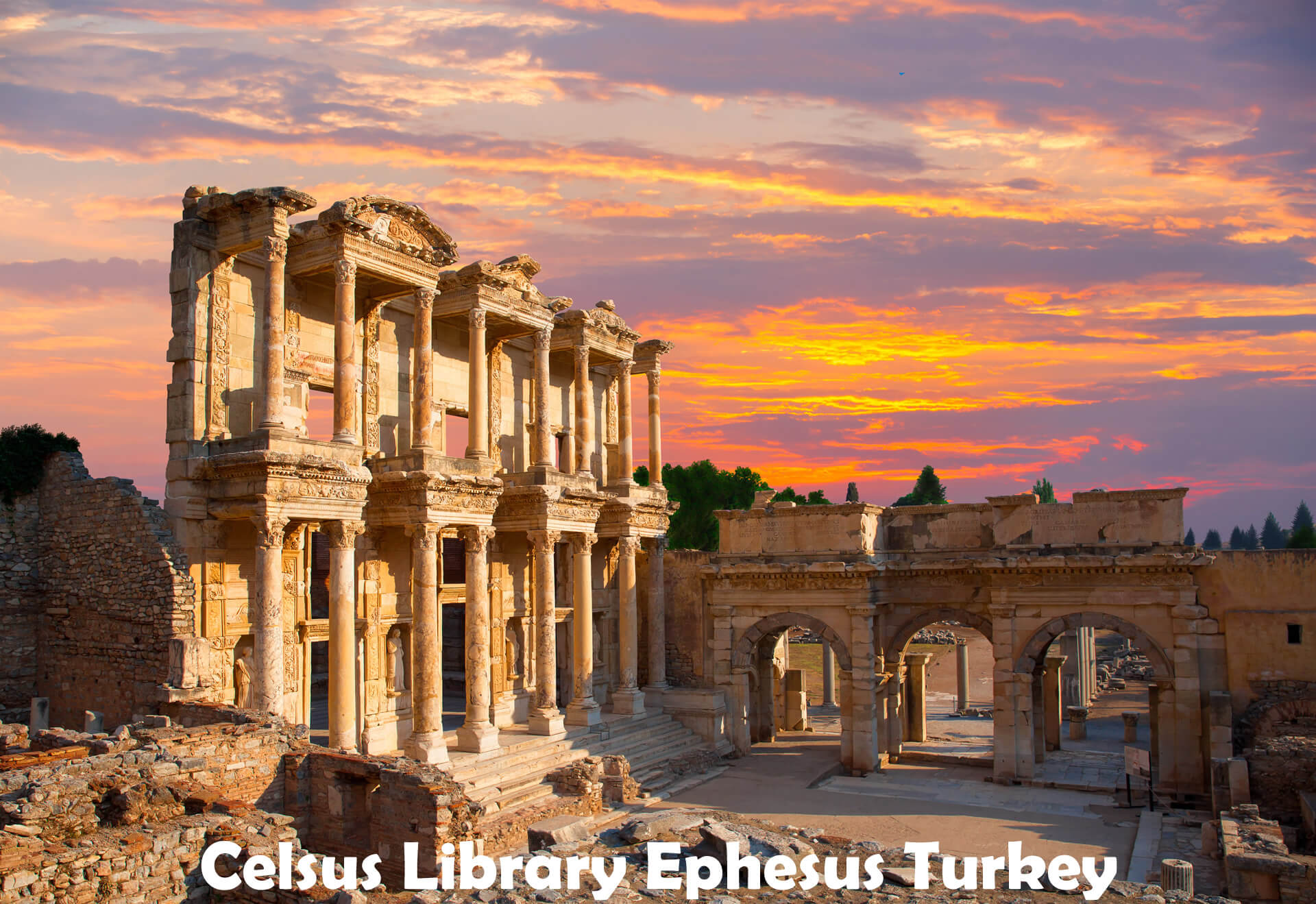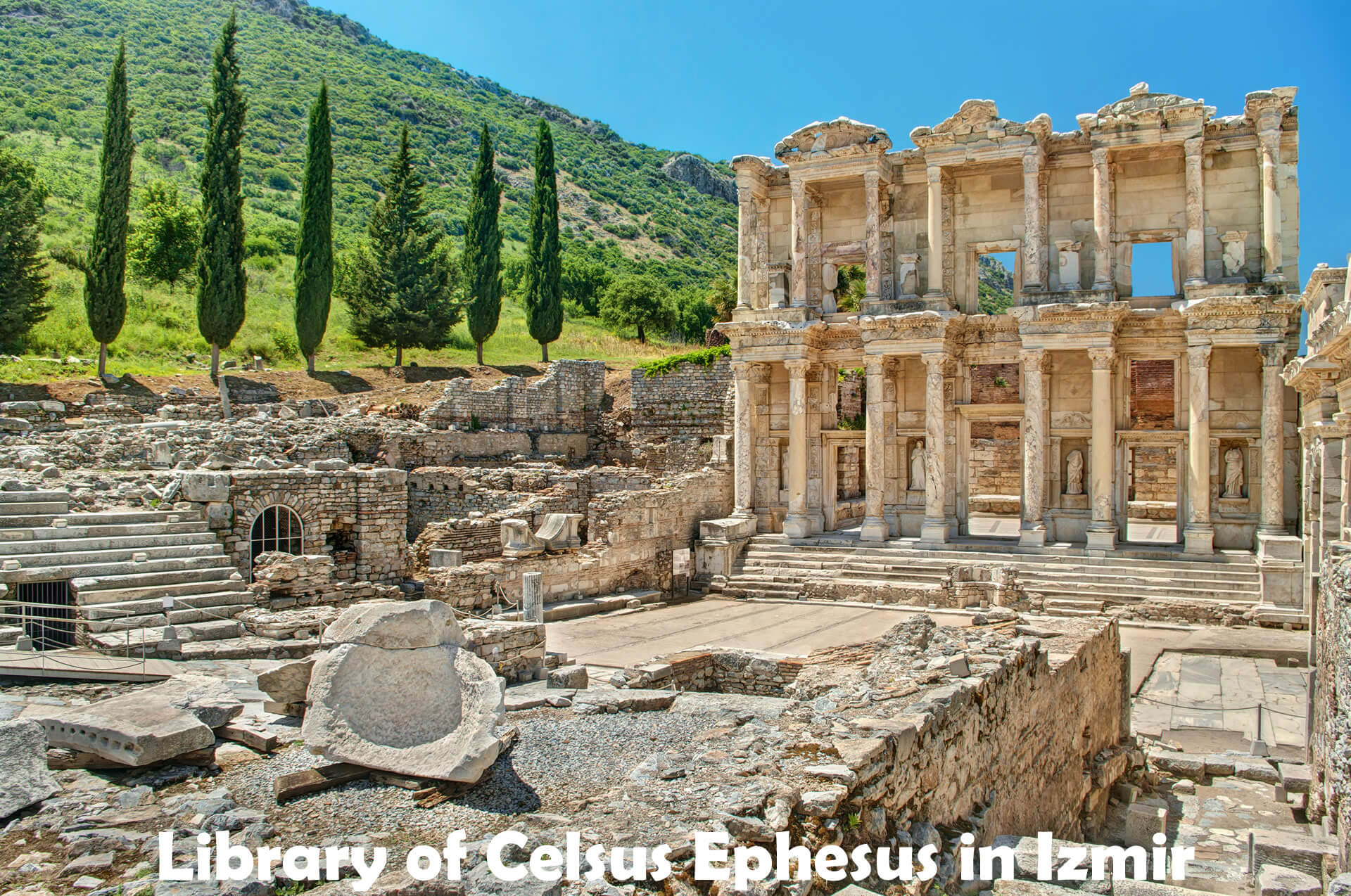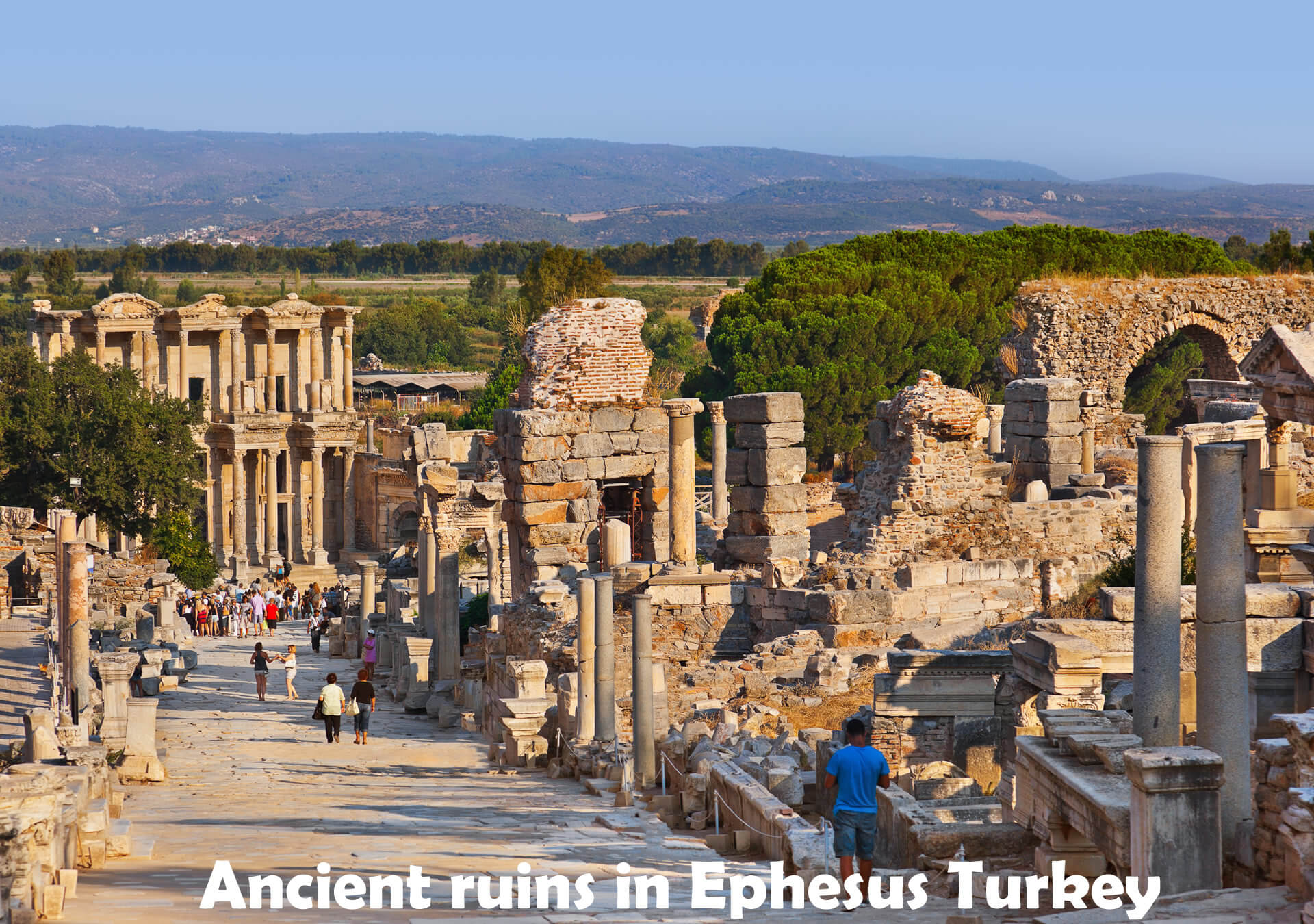In recent years, excavations and excavations found the mounds around Ephesus and the Ayasuluk Hill, where the castle is located, and settlements from the Hittites. In the Hittites Period, the name of the city was Apasas.
Celsus Library Ephesus Turkey

Ephesus Opening Hours:
Tuesday: 10AM–4:30PM
Wednesday: 10AM–4:30PM
Thursday: 10AM–4:30PM
Friday: 10AM–4:30PM
Saturday: 10AM–4:30PM
Sunday: 10AM–4:30PM
Monday: 10AM–4:30PM
Periods: Greek Dark Ages to Late Middle Ages
Phone: (0232) 892 60 10
Founded: 10th century BC
Hellenistic Ephesus

B.C. Ephesus, the port city where immigrants from Greece also started to live in 1050 BC. It was moved around the Temple of Artemis in 560. Ephesus, visited today, was built by Lysimakhos, one of the generals of Alexander the Great, in BC. It was founded in 300 years. From the city of Rome, autonomously printed joint money with the city of Apameia Kibotos.
These cities began to behave very brightly semi-autonomously in Asia Minor in the classical period. Lysimakhos reconstructs the city according to the "Grid Plan" found by Miletus Hippodamos. According to this plan, all streets and streets in the city cut each other vertically.
Ephesus in Roman Period
Ephesus, which experienced its most magnificent periods during the Hellenistic and Roman ages, became the capital of the Asian State during the time of the Roman Emperor Augustus and its population at that time (1st-2nd century BC) exceeded 200,000 people. In this period, everywhere is equipped with monumental structures made of marble. B.C. With the filling of the harbor in the 4th century, trade declined in Ephesus. Emperor Hadrian had the port cleaned several times. The port is filled with alluviums brought by Marnas Stream and Küçük Menderes river from the north. Ephesus moves away from the sea. In the 7th century, the Arabs attack these shores. Ephesus, which was relocated in the Byzantine period and came to the Ayasuluk Hill in Selçuk, where it was first established, was taken by the Turks in 1330. Ayasuluk, which is the center of Aydinogullari, has started to shrink gradually since the 16th century. Today, there is a touristic Selçuk district with a population of 30.000 in the region.
In the frieze at the entrance of the Temple of Hadrianus at the ruins of Ephesus, Ephesus's 3,000 year old legend is found with the following sentences: Androklos, the brave son of the Athenian king Kodros, wants to explore the opposite side of the Aegean. First, he consults with the prophets of the Temple of Apollo in the city of Delfi. The prophets tell him that he will establish a city where the fish and pig point. While Androklos thinks the meaning of these words, he sails to the dark blue waters of the Aegean ... When they arrive at the bay at the mouth of the Kaystros (Küçük Menderes) River, they decide to go ashore. While cooking the fish they catch by catching fire, a wild boar coming out of the bushes snatches the fish by escaping. Here is the prophecy. Here they decide to build a city ...
Ephesus, which was the main gate between East and West, was an important port city. This position enabled Ephesus to develop as the most important political and commercial center of its era and to become the capital of the province of Asia in the Roman Period. Ephesus does not only owe its importance in antiquity to this. The largest temple of the Artemis cult, based on the ancient mother goddess (Kybele) tradition of Anatolia, is also located in Ephesus. The Temple of Artemis in Ephesus is considered one of the seven wonders of the world.
B.C. In the 6th century, Ephesus, which was at the forefront with Milet in science, art and culture, brought up famous people such as wise Herakleitos, dreamner Artemidoros, poet Callinos and Hipponaks, grammar scholar Zenodotos, physician Soranos and Rufus.
Architectural works
Since Ephesus has been displaced many times throughout its history, its ruins spread over a wide area of ??approximately 8 kilometers. The ruins in four main regions such as Ayasuluk Hill, Artemision, Ephesus and Selçuk are visited by an average of 1.5 million tourists annually. The main buildings and artifacts in Ephesus, the first city made entirely of marble, are described below:
The Temple of Artemis:
It is one of the world's seven wonders. It is the first temple of the ancient world built from marble. Its size is 130 x 68 meters and its façade faces west like other Artemis (Mother Goddess) temples.
Magnesia Gate (Upper Gate) and East Gymnasium:
Ephesus has two entrances. One of them is the Magnesia Gate, on the Virgin Mary's House Road, which is the eastern gate of the city walls around the city. The Eastern Gymnasium is right next to the Magnesia Gate at the foot of Mount Panayir. Gymnasion is the school of the Roman Age.
The Odeion
Ephesus had a two-chamber administration. One of them, the Advisory Council meetings, was held in this closed structure and concerts were given. It has a capacity of 1,400 people. For this reason, the structure is also called "Bouleterion".
Upper Agora and Basilica:
Built by Emperor Augustus, it is the place where official meetings and stock market transactions take place. It is in front of Odeion.
Prytaneion (Town Hall):
Prytan served as the city's mayor. Its biggest task was to ensure that the city fire, which symbolizes the immortality of the city in this building with thick columns, does not go out. Prytan assumed this task on behalf of the City Goddess Hestia. Around the hall were statues of gods and emperors. Artemis statues in Ephesus museum were found here and later brought to the museum. The buildings next to it were reserved for official guests of the city.


 B.C. Ephesus, the port city where immigrants from Greece also started to live in 1050 BC. It was moved around the Temple of Artemis in 560. Ephesus, visited today, was built by Lysimakhos, one of the generals of Alexander the Great, in BC. It was founded in 300 years. From the city of Rome, autonomously printed joint money with the city of Apameia Kibotos.
B.C. Ephesus, the port city where immigrants from Greece also started to live in 1050 BC. It was moved around the Temple of Artemis in 560. Ephesus, visited today, was built by Lysimakhos, one of the generals of Alexander the Great, in BC. It was founded in 300 years. From the city of Rome, autonomously printed joint money with the city of Apameia Kibotos.